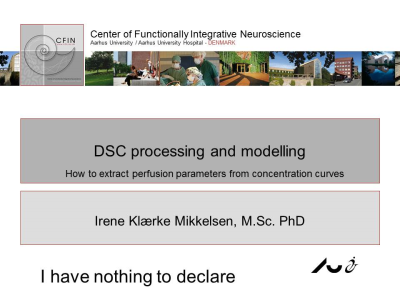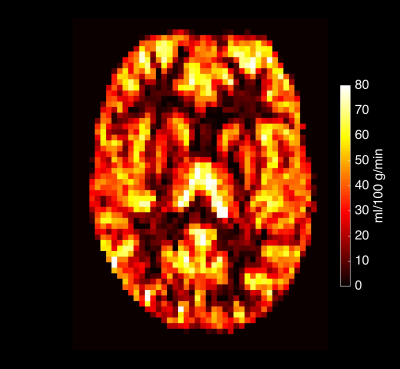Joint Annual Meeting ISMRM-ESMRMB • 16-21 June 2018 • Paris, France

| Weekend Educational Course Basics of Perfusion Imaging |
||||||||||||||||||
|
Basics of Perfusion Imaging: Part 1
Weekend Course ORGANIZERS: Fernando Calamante, Hanzhang Lu, Steven Sourbron
Sunday, 17 June 2018
Skill Level: Basic
Session Number: WE-16A
Overview This half-day, basic course is designed for scientists and clinicians who want to learn about MR imaging of perfusion and related parameters. The course will begin with a description of the physiology of perfusion, followed by the acquisition and data processing of the main classes of perfusion imaging techniques (dynamic susceptibility contrast MRI, dynamic contrast enhanced MRI, and arterial spin labeling). Target Audience This course is designed for basic research scientists and clinicians. It is expected to provide attendees with an understanding of fundamental as well as practical aspects of perfusion MRI and a solid background upon which to base decisions about choice of perfusion imaging methods for their own applications. Educational Objectives As a result of attending this course, participants should be able to: -Define and understand the relationships between perfusion and related parameters such as transit times, blood volume, capillary permeability, and interstitial volume; -Describe the basic principles and assumptions underlying common tracer-kinetic analysis models for perfusion and permeability measurement; -Describe how ASL principles can be used to measure physiological parameters beyond CBF; -Assess which parameters each of the above methods are inherently sensitive to and why; -Describe the key issues in the extraction of physiological parameters from ASL, DSC, and DCE data; and -Identify the appropriate acquisition methods for perfusion and other related parameters.
|
||||||||||||||||||
|
Basics of Perfusion Imaging: Part 2
Weekend Course ORGANIZERS: Fernando Calamante, Hanzhang Lu, Steven Sourbron
Sunday, 17 June 2018
Skill Level: Basic
Session Number: WE-16B
Overview This half-day, basic course is designed for scientists and clinicians who want to learn about MR imaging of perfusion and related parameters. The course will begin with a description of the physiology of perfusion, followed by the acquisition and data processing of the main classes of perfusion imaging techniques (dynamic susceptibility contrast MRI, dynamic contrast enhanced MRI, and arterial spin labeling). Target Audience This course is designed for basic research scientists and clinicians. It is expected to provide attendees with an understanding of fundamental as well as practical aspects of perfusion MRI and a solid background upon which to base decisions about choice of perfusion imaging methods for their own applications. Educational Objectives As a result of attending this course, participants should be able to: -Define and understand the relationships between perfusion and related parameters such as transit times, blood volume, capillary permeability, and interstitial volume; -Describe the basic principles and assumptions underlying common tracer-kinetic analysis models for perfusion and permeability measurement; -Describe how ASL principles can be used to measure physiological parameters beyond CBF; -Assess which parameters each of the above methods are inherently sensitive to and why; -Describe the key issues in the extraction of physiological parameters from ASL, DSC, and DCE data; and -Identify the appropriate acquisition methods for perfusion and other related parameters.
|
||||||||||||||||||
| Back | ||||||||||||||||||
| The International Society for Magnetic Resonance in Medicine is accredited by the Accreditation Council for Continuing Medical Education to provide continuing medical education for physicians. |


